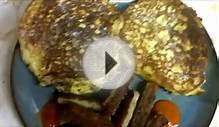
Fad diets come and go, but in my practice, I follow the science more carefully than I follow the fads. In doing so, I have been tremendously impressed with the work of Gary Taubes, who has meticulously detailed the science behind the low-carbohydrate diet trends. He is not alone. Other writers, scientists, and physicians have been validating the health hazards associated with excess carbohydrates - where our dietary consumption has increased over the last fifty years in direct parallel with the epidemics of obesity, diabetes, and malnutrition. Scientific trials have confirmed benefits from restricting the carbohydrates: weight loss as well as reduced diabetes and heart disease markers. Although there are some individuals who will do as well or better with a low-fat diet, more people will lose weight on a low-carb diet. This is not, therefore, the only way to lose weight, I have just found it to be the most widely successful plan.
For almost everyone, a low-carbohydrate diet is more satiating, sustainable, and complex in its nutrient density. Nothing foils a good diet plan like a healthy physiology looking for nutrients it can't find.
DrDeborahMD's version of the low carbohydrate diet therefore places high value on food quality, considering food origins and nutrient density. I offer you not just a diet, but rather a viable and sustainable food plan, ideal for weight loss and suitable for anyone. I am sharing with you essentially what I eat on a daily basis. Bon appetit!
Savor the Primary Foods: Proteins and Fats
Cook using any moderate heat source. No breading is permitted. Stop eating when you are full.
Protein: Every time you're hungry, eat your choice of the following:
- Meat. Meat starts with beef, pork, ham, bacon, lamb, and veal. If you're lucky enough to have a hunter in your life, it may also include venison, elk (lucky you!), and more for the truly adventurous. For processed meats, check the label; the carb count should be about 1 gram per serving. Grass-fed provides countless benefits (for you, the farmer and our world in general) over grain-finished meat and is well worth the extra expense if you can afford it. Please enjoy the fat on the meat, too; it aids in digestion, nutrient absorption and general physiological health.
- Poultry. Enjoy chicken, turkey, duck, and other fowl, with the skin.
- Fish and shellfish. Choose wild-caught salmon and other Monterey Bay Aquarium-approved seafood.
- Eggs. Eat as many whole eggs from pasture-raised hens as you like. Seriously: if you want 6 a day, eat them.
Fats and Oil:
Fats in general are important to include in your meals. A low carb diet (relative to what's been advised) is a high fat diet.
- Healthful fats. All healthful fats and oils are allowed, including organic butter, even organic lard. Oils should be organic, cold-pressed. Avoid margarine and hydrogenated oils.
- Salad dressings. The ideal is olive oil and vinegar or lemon juice. Prepared dressings should be rare (usually contain genetically modified oils) and chosen to yield no more than 1-2 grams of carbs per serving. Avoid “light/lite” dressings.
- Frying. Use fats that are solid at room temperatures (e.g., ghee, coconut, and lard).
Foods to Eat Daily
The most common pitfall some folks encounter on a low-carb diet is constipation caused by unhappy probiotic bacteria (our microbiome) in our intestines. Our microbiome loves it when we chew on the fibrous stalk of asparagus, eating the tough chew parts of any vegetable we can find. At the very least, our guts are happy with a wide variety of low carbohydrate vegetables. So a high nutrient low-carb diet is not low-fat, it's high fat and high vegetable. I often say my weight loss eating plan is actually plant-based, just because the largest part of your plate can pleasingly be filled with a variety of:
- Greens. Consume 2 cups daily (measured raw) of any leafy vegetable, raw or cooked. Cooked greens nourish best when eaten with melted butter or other fat.
- Vegetables. Eat 1 cup (measured uncooked) of artichokes, asparagus, broccoli, Brussels sprouts, cauliflower, celery, cucumber, eggplant, green beans, jicama, leeks, mushrooms, okra, onions, peppers, pumpkins, shallots, snow peas, sprouts (bean and others), sugar snap peas, summer squash, tomatoes, rhubarb, wax beans, or zucchini.
- (Bone) Broth Soup. Enjoy 2 cups daily to replace minerals. Homemade is best and allows you to modify salt content to taste and possible need for salt restriction.
You may consume additional vegetables ONLY if you are still hungry after first eating meat, poultry, fish, seafood, or eggs.
Foods Allowed in Limited Quantities
- Organic cheese. Consume up to 4 ounces of cheese, preferably raw, per day. Avoid processed cheese.
- Organic cream and butter. Enjoy as much as you want - the "limit" is that it comes after you get your nutrients from the foods listed above. Half-and-half is not cream, I'm talking about real whipping cream here!
- Mayonnaise: Use up to 4 tablespoons per day.
- Olives. Enjoy up to 6 black or green olives per day.
- Avocado. Eat up to half an avocado per day.
- Lemon/lime juice. Consume up to 4 teaspoons per day.
- Tamari. Use up to 4 tablespoons per day.
- Pickles. Enjoy up to 2 servings per day of dill (no sugar) pickles.
- Snacks. You can consume limited portions of sausage, pepperoni, other meats, and deviled eggs.
Avoid Problematic Foods
Easier said than done, to start with, but becomes easier with habit and success: avoid all nutrient poor, carbohydrate rich foods full of sugars and starches.
- All sugars. This includes simple carbs and starches (complex carbs). Sugar, honey, maple syrup, molasses, corn syrup, beer, milk, flavored yogurts, fruit, and fruit juices are prohibited. The only carbs to eat are the nutritionally dense, fiber-rich vegetables listed above.
- Starches. This category comprises grains, rice, cereals, flour, cornstarch, breads, pasta, bagels, starchy vegetables such as slow-cooked beans, (pinto, Lima, black beans), root vegetables, peas, and all potato products.
- Inflammatory oils. Soybean, cottonseed, and even celebrated canola oil, along with all the other "vegetable oils" cause inflammation, raise the risk of certain cancers and degenerative disease in general. Inflammation is a powerful factor in retaining excess weight.
Sweeteners and Desserts
- Stevia. Both stevia and erythritol are acceptable sweeteners. (Artificial non-caloric sweeteners are at the least confusing and at the worst hazardous to your body.)
Beverages
- Water. Drink as much filtered water, zero-carb seltzers, and herbal tea as you like.
- Coffee/tea. Enjoy up to 3 cups a day of coffee or tea. Green and white teas are richest in anti-oxidants. (Avoid using caffeine excessively if you feel groggy: see Support section below.)
- Alcohol. Avoid alcohol initially. As weight loss and new dietary patterns are established, low-carbohydrate alcohol (not beer) is permitted in moderate quantities.
INTERESTING VIDEO












